Clear Floor or Ground Space [§305]
Sufficient clear floor or ground space is required at accessible controls, operable parts, drinking fountains, lavatories and sinks, ATMs and fare machines, appliances, beds, and other elements. Provisions for these elements apply the clear floor or ground specifications in 305.
Clear Floor Space at Elements
Clear floor space is required at each accessible element, including storage cabinets, drinking fountains and other fixtures, and electrical outlets. Clear floor spaces can overlap where elements are in close proximity.
Position [§305.5]
At most elements, clear floor or ground space can be positioned for either a forward or a side approach. For better usability, a forward approach is required at certain elements, including dining and work surfaces, drinking fountains, lavatories, and most sinks. At other elements, a side approach is allowed. A side approach is typically provided or required at sales and service counters, beds, and most appliances.
Forward Approach
Side Approach
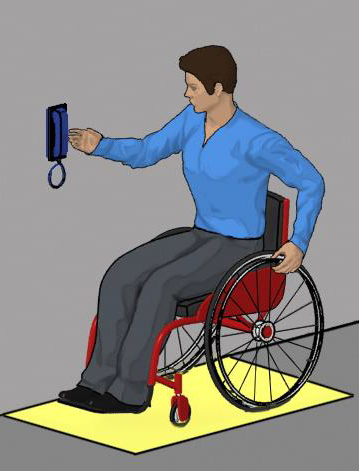
Centering
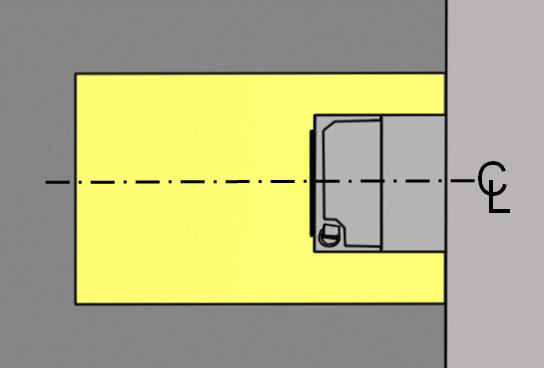
Centering the clear floor or ground space on elements is often advisable but is only required at drinking fountains, kitchen work surfaces, and washers and dryers.
Surface and Size [§305.2 and §305.3]
Clear floor spaces must meet requirements for ground and floor surfaces, including criteria for firmness, stability, and slip resistance. They must be free of level changes and not slope more than 1:48.
The minimum size (30” by 48”) applies whether the space is positioned for forward or side approaches. Additional space is required when the space is confined on three sides and is obstructed for more than half the depth, such as when elements are recessed in alcoves.
Approach and Maneuvering Clearance [§305.6 and §305.7]
Where the space is obstructed on both sides for more than half the depth, additional clearance is required for maneuvering. Accessible routes must connect to the unobstructed side of the space.
Knee and Toe Space [§305.4 and §306]
Objects that provide space for toes or knees can overlap a portion of the clear floor space. Knee and toe space allows a closer approach to elements and reduces the reach to operable parts. It is required at some elements, such as drinking fountains and lavatories, so that people using wheelchairs can pull up to them.
Toe Space
Objects that provide clearance for toes can overlap a portion of the clear floor space.
Knee Space
Objects that provide clearance for knees and toes can overlap a greater portion of the clear floor space (up to a depth of 25”).
Knee and toe space must be at least 30” wide and up to 25” deep measured to the leading edge of the clear floor space. The specifications allow space for plumbing, enclosures, and supports outside the minimum clearances. No object can protrude into the required clearances (other than the dip of the overflow at lavatories and sinks).
Knee and Toe Space Depth
Where knee and toe space is required, it must be at least 17” deep. In all cases, the minimum depth may be further determined by the required reach to operable parts served by the clear floor space.
Knee and toe space is required below drinking fountains, lavatories and sinks, dining and work surfaces, and those sales and service counters that provide a forward approach.
Obstructed Reach Depth
At any element, the knee and toe space must be as deep as the required reach to operable parts. This facilitates access since a forward reach does not extend far beyond the toes. Both the reach depth and the knee and toe space depth are limited to 25” measured from the leading edge of obstructions. Space beyond this depth is not usable.
Knee and Toe Clearances
Where knee and toe space is required at an element, it must be at least 17” deep. Beyond a depth of 8” measured from the leading edge, the 27” minimum high knee clearance can reduce 18” (to the 9” toe space) over a 3” span.
When the knee and toe depth exceeds the 17” minimum, the additional space must provide full knee clearance at least 27” high.

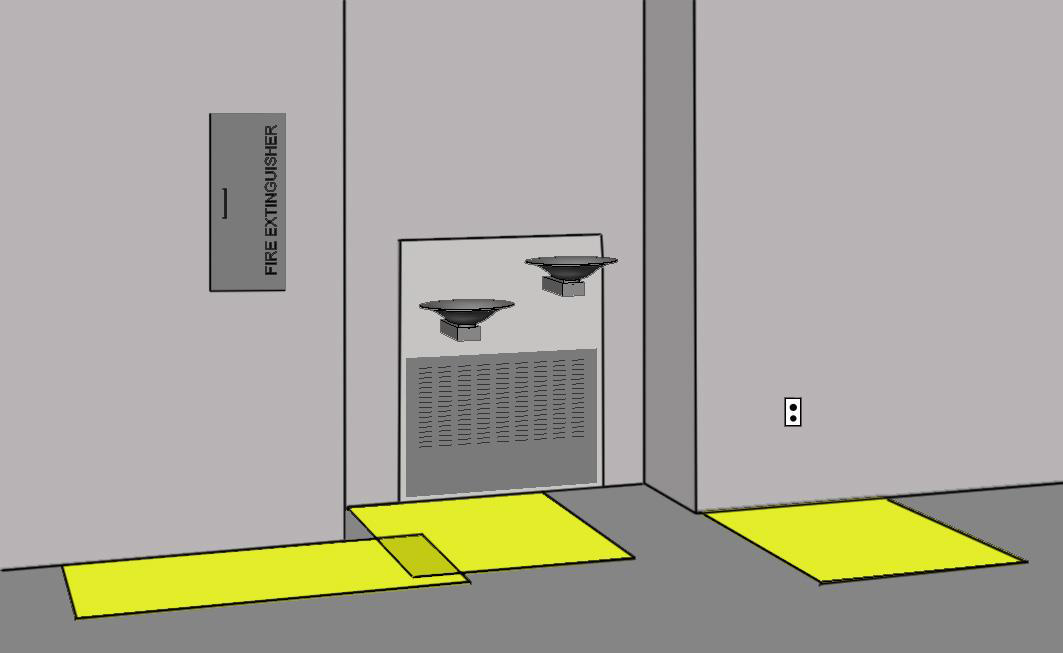
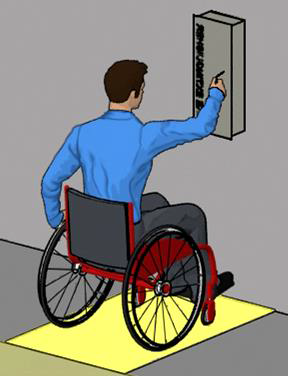
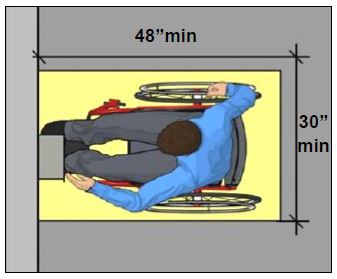
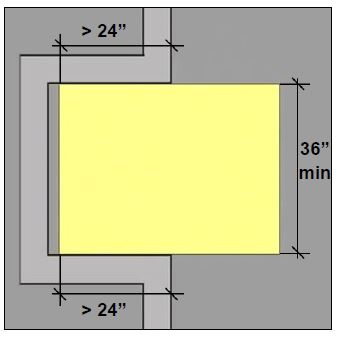
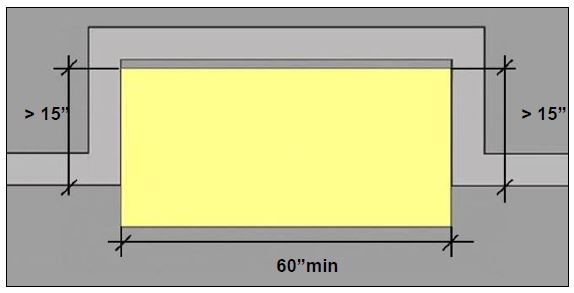
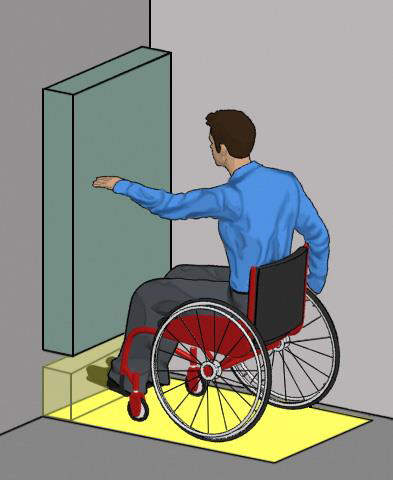
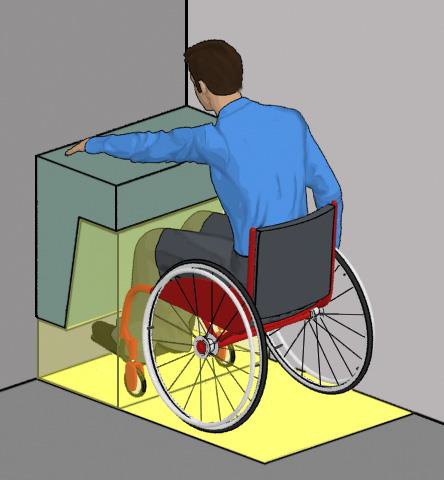
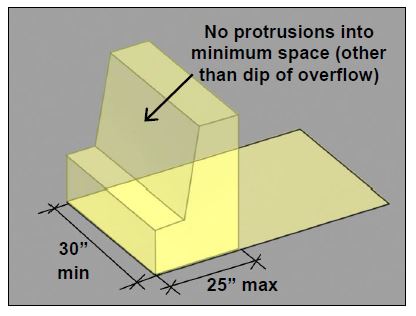
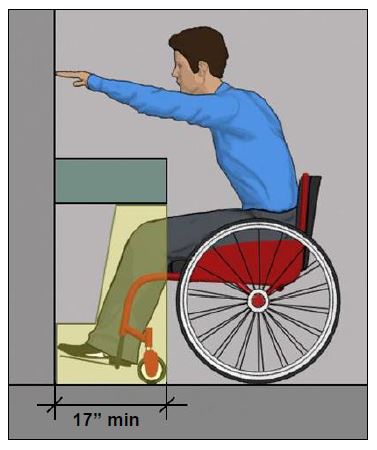

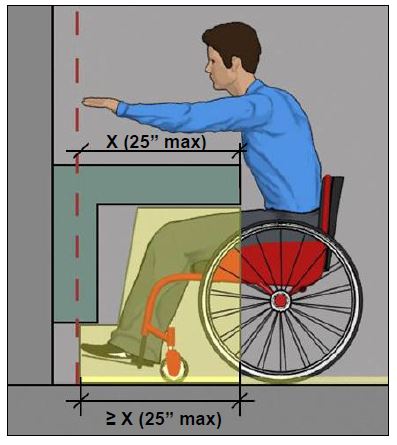
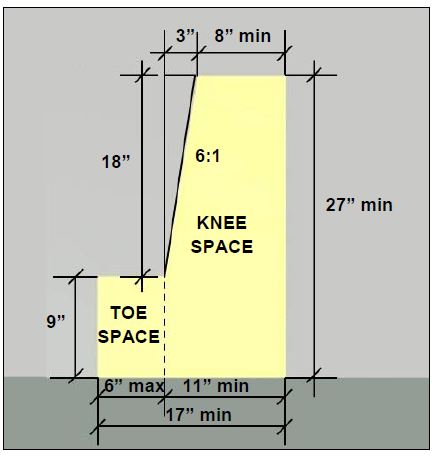
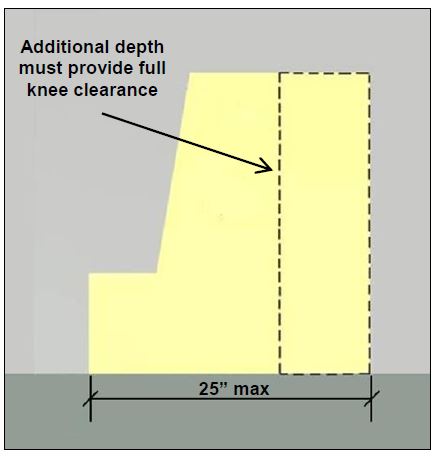
User Comments/Questions
Add Comment/Question